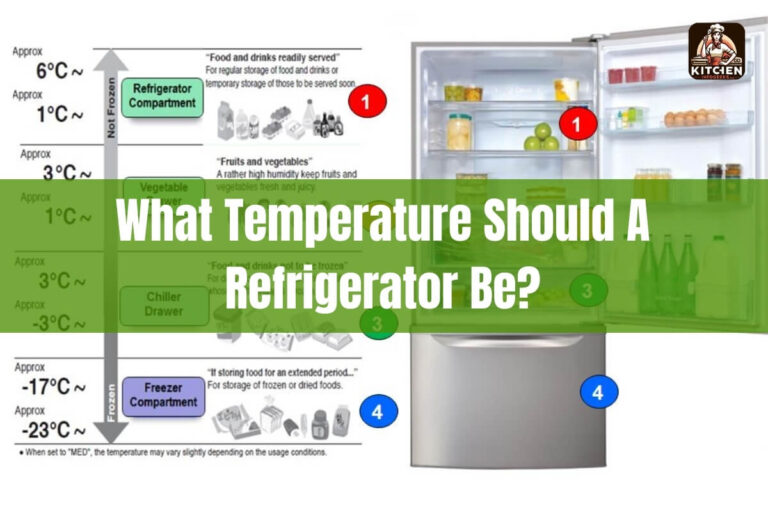
Are you wondering how much power your refrigerator consumes? Understanding the amp usage of your fridge is crucial for ensuring proper electrical safety, efficient energy consumption, and cost savings. In this comprehensive guide, we’ll dive deep into the amperage requirements of refrigerators, covering everything from household models to commercial units. We’ll explore the factors affecting amp usage, typical ranges, calculation methods, wiring recommendations, and energy-saving tips.
The short answer is that most household refrigerators use between 3 to 8 amps, while commercial units can consume up to 20 amps or more. However, there’s more to it than just a simple number. Let’s break it down and understand the intricacies of refrigerator amp usage.
What are Amps, and Why Do They Matter for Refrigerators?
Before we delve into the specifics, let’s establish a basic understanding of amps (amperes) and their significance in electrical circuits. Amps measure the flow of electric current, which is the rate at which electrons move through a conductor. In simpler terms, amps represent the amount of electricity flowing through a circuit.
Refrigerators, like any other electrical appliance, require a certain amount of electrical current to operate. The compressor, which is the heart of a refrigerator’s cooling system, is the primary consumer of amps. When the compressor runs, it draws a specific amount of current to power the refrigeration cycle.
Knowing the amp usage of your refrigerator is crucial for several reasons:
- Electrical Safety: Overloading an electrical circuit with too many amps can lead to potential fire hazards, tripped circuit breakers, or damaged wiring. Understanding your fridge’s amp requirements ensures you have the appropriate wiring and circuit capacity.
- Energy Efficiency: Higher amp usage translates to higher energy consumption and increased utility bills. By understanding your refrigerator’s amp usage, you can estimate its power consumption and make informed decisions about energy-efficient upgrades or replacements.
- Proper Installation: When installing a new refrigerator or setting up a dedicated circuit, knowing the amp requirements is crucial for selecting the correct wire gauge, circuit breaker rating, and electrical infrastructure.
Now that we understand the importance of amps for refrigerators, let’s explore the various factors that influence their amp usage.
Factors Affecting Refrigerator Amp Usage
The amp usage of a refrigerator can vary depending on several factors, including:
- Size and Type: Larger refrigerators with more cubic feet of interior space tend to have higher amp requirements compared to smaller or mini-fridge models. Additionally, different refrigerator types, such as top-freezer, side-by-side, or French door models, may have varying amp usage due to their design and features.
- Efficiency and Age: Newer, energy-efficient refrigerators are designed to consume less power, resulting in lower amp usage. Older models, on the other hand, may have higher amp requirements due to less efficient compressors and insulation.
- Additional Features: Refrigerators with built-in ice makers, water dispensers, or other advanced features may require more amps to power these extra components.
- Ambient Temperature: In warmer environments, the refrigerator’s compressor may need to work harder to maintain the desired interior temperature, leading to increased amp usage.
It’s essential to consider these factors when estimating the amp usage of your specific refrigerator model. Manufacturers typically provide this information in the product specifications or owner’s manual.
Typical Amp Usage Range for Household Refrigerators
While the exact amp usage can vary based on the factors mentioned above, here are some general ranges for common household refrigerator types:
- Mini Refrigerators: Typically consume around 1 to 2 amps.
- Top-Freezer Refrigerators: Usually range between 3 and 4 amps.
- Side-by-Side Refrigerators: Can go up to 7 or 8 amps, depending on size and features.
- French Door Refrigerators: Tend to be in the range of 4 to 6 amps, with larger models potentially using more.
It’s important to note that these are approximate ranges, and your specific refrigerator model may fall outside of these values. Always refer to the manufacturer’s specifications or consult a professional electrician for accurate information.
Commercial Refrigerators and Their Amp Usage
While household refrigerators typically have amp usage in the single-digit range, commercial refrigerators used in restaurants, grocery stores, and other food service establishments can consume significantly more power.
Commercial refrigerators are designed to maintain consistent temperatures and handle higher cooling loads, often requiring larger compressors and more powerful cooling systems. As a result, their amp usage can be much higher than residential units.
Here are some typical amp usage ranges for commercial refrigerators:
- Reach-in Refrigerators: These upright units can consume anywhere from 5 to 15 amps, depending on their size and capacity.
- Walk-in Coolers and Freezers: Large walk-in units commonly found in restaurants and grocery stores can draw up to 20 amps or more, especially during peak usage or in warmer climates.
- Specialty Refrigerators: Refrigerators designed for specific applications, such as beverage coolers or blast chillers, may have varying amp requirements based on their intended use and cooling capacity.
It’s crucial to consult with professional installers or refer to the manufacturer’s guidelines when setting up commercial refrigeration units to ensure proper electrical infrastructure and safety.
Calculating Refrigerator Power Consumption
While understanding amp usage is important, it’s also helpful to know how to calculate the overall power consumption of your refrigerator. This information can aid in estimating energy costs and making informed decisions about energy efficiency.
The formula for calculating power consumption is:
Power (Watts) = Voltage (Volts) x Current (Amps)
In most residential settings, the standard voltage is 120 volts. So, if your refrigerator draws 5 amps, its power consumption would be:
Power = 120 Volts x 5 Amps = 600 Watts
However, it’s important to note that refrigerators don’t continuously run at their maximum amp draw. They cycle on and off to maintain the desired temperature, meaning their average power consumption is lower than the calculated value.
To estimate the actual energy usage, you can multiply the power consumption (in watts) by the number of hours the refrigerator runs per day, and then divide by 1,000 to get the kilowatt-hours (kWh) consumed. Utility companies typically bill residential customers based on their kWh usage.
For example, if your 600-watt refrigerator runs for 12 hours per day:
Daily Energy Usage = (600 Watts x 12 hours) / 1,000 = 7.2 kWh
By understanding your refrigerator’s power consumption, you can better estimate its impact on your monthly energy bills and make informed decisions about potential upgrades or replacements.
Choosing the Right Wire Gauge and Circuit for Refrigerators
When installing a new refrigerator or setting up a dedicated circuit, it’s crucial to choose the appropriate wire gauge and circuit breaker rating to ensure electrical safety and proper operation.
Here are some general guidelines for wire gauges and their corresponding ampacities for copper conductors in a residential setting:
- 14-gauge wire: Suitable for up to 15 amps
- 12-gauge wire: Suitable for up to 20 amps
- 10-gauge wire: Suitable for up to 30 amps
It’s generally recommended to size the wire gauge and circuit breaker rating to exceed the refrigerator’s amperage requirements, providing a margin of safety. For example, if your refrigerator draws 8 amps, a 14-gauge wire with a 15-amp circuit or a 12-gauge wire with a 20-amp circuit would be suitable choices.
Additionally, it’s advisable to install refrigerators on a dedicated circuit to avoid potential overloads from other appliances sharing the same circuit. This practice ensures a stable supply of electricity and prevents tripped circuit breakers or safety hazards.
When it comes to the types of cables used for refrigerator installations, the most common choices are:
- NM-B Cable (Non-Metallic Type B): Suitable for dry, indoor locations and commonly used for 15-amp or 20-amp circuits.
- UF-B Cable (Underground Feeder): Similar to NM-B but rated for damp locations and suitable for underground installations.
- THHN/THWN: Used in conduit installations, often required by local codes for outdoor kitchens, attics, or areas exposed to moisture.
- (AC) Cable: These are suitable for areas where extra protection against physical damage is required.
It’s essential to follow local electrical codes and consult with a qualified electrician when installing or replacing a refrigerator to ensure proper wiring and safety.
Energy-Saving Tips for Reducing Refrigerator Amp Usage
While understanding amp usage is crucial, it’s also essential to explore ways to reduce energy consumption and lower your utility bills. Here are some practical tips for reducing your refrigerator’s amp usage and improving energy efficiency:
- Maintain and Clean Refrigerator Coils and Seals: Regularly cleaning the condenser coils and gasket seals can improve your refrigerator’s efficiency, reducing the workload on the compressor and lowering amp usage.
- Consider Upgrading to a More Efficient Model: If your refrigerator is more than 10 years old, it may be worth considering an upgrade to a newer, more energy-efficient model. Look for ENERGY STAR certified appliances, which meet stringent energy-saving guidelines.
- Adjust Temperature Settings: Maintaining the appropriate temperature settings for your refrigerator and freezer can help reduce unnecessary energy consumption. Consult the manufacturer’s recommendations for optimal temperature ranges.
- Minimize Door Opening: Every time you open the refrigerator door, cold air escapes, forcing the compressor to work harder to maintain the desired temperature. Minimize door openings and ensure the door seals properly when closed.
- Proper Placement and Ventilation: Position your refrigerator away from heat sources, such as ovens or direct sunlight, and ensure adequate ventilation around the appliance to prevent it from working harder than necessary.
By implementing these energy-saving tips, you can reduce your refrigerator’s amp usage, lower your energy bills, and contribute to a more sustainable lifestyle.
Conclusion
Understanding how many amps a refrigerator uses is crucial for ensuring electrical safety, optimizing energy efficiency, and making informed decisions about appliance upgrades or replacements. In this comprehensive guide, we’ve covered the various factors that influence refrigerator amp usage, typical ranges for household and commercial units, calculation methods for power consumption, wiring recommendations, and energy-saving tips.
Remember, while most household refrigerators use between 3 to 8 amps, the exact amp usage can vary depending on the size, type, efficiency, and features of your specific model. It’s essential to consult the manufacturer’s specifications or seek professional advice to ensure accurate information.
By understanding your refrigerator’s amp usage and implementing energy-saving practices, you can contribute to a safer and more environmentally-friendly household while potentially reducing your monthly utility bills.






